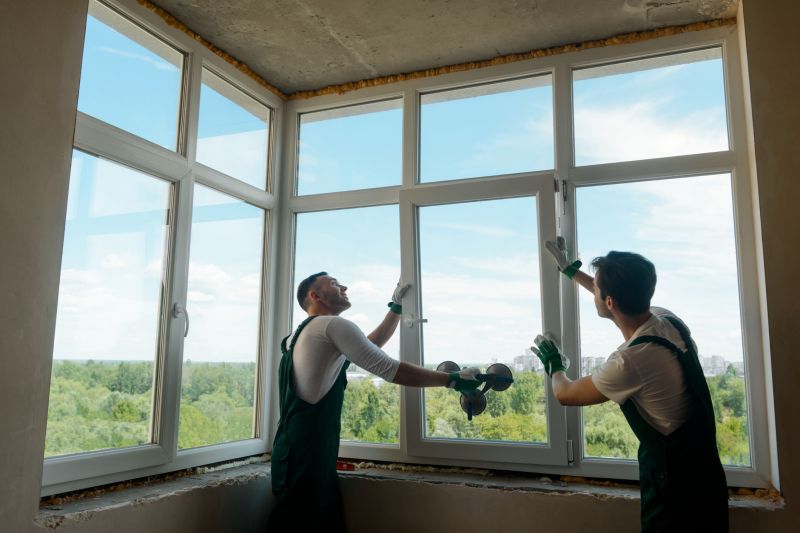Essential Products For Professional Windows Installation Setups
Equip yourself with the must-have items that ensure a reliable and efficient Windows installation process.
 Installing windows requires a combination of precise tools, materials, and accessories to ensure a secure and efficient fit. From the initial preparation of the window opening to the final sealing and finishing touches, selecting the right products can significantly impact the quality and durability of the installation. Properly chosen components help prevent issues such as air leaks, water intrusion, and structural instability, contributing to energy efficiency and overall comfort within the space.
Installing windows requires a combination of precise tools, materials, and accessories to ensure a secure and efficient fit. From the initial preparation of the window opening to the final sealing and finishing touches, selecting the right products can significantly impact the quality and durability of the installation. Properly chosen components help prevent issues such as air leaks, water intrusion, and structural instability, contributing to energy efficiency and overall comfort within the space.
Top Overall Option
Universal Window Installation Kit
A comprehensive kit that includes essential tools, sealants, flashing tapes, and hardware components designed to accommodate a wide range of window sizes and styles. Its versatility makes it suitable for both DIY projects and professional installations, providing everything needed for a secure and weather-tight fit.
Types of Products For Windows Installations
Window Flashing Tape
Self-adhesive waterproof tape used to seal around window perimeters to prevent water infiltration.
Weather-Resistant Barrier
Materials designed to block moisture and air leaks while allowing vapor to escape.
Insulation Foam
Expanding foam products used to fill gaps around window frames for thermal insulation.
Window Sealant
Flexible caulking compounds that seal joints and prevent air and water leaks.
Trim and Molding
Decorative and functional trim pieces used to finish the interior and exterior window edges.
Hinges and Locks
Hardware components that enable window operation and security.
Sill Pan
A protective pan installed beneath the window to direct water away from the structure.
Fasteners and Anchors
Nails, screws, and anchors used to secure the window and related components in place.
Expansion Joints
Products that accommodate movement and prevent stress on the window frame.
Window Grilles and Dividers
Decorative elements that add aesthetic appeal and divide window panes.
Acoustic Insulation
Materials that help reduce noise transmission through window openings.
Security Barriers
Additional hardware or film to enhance window security.
Cleaning and Maintenance Products
Specialized cleaners and protectants for window longevity and appearance.
Interior Finishing Kits
Complete sets of trim, caulk, and accessories for interior finishing touches.
Exterior Cladding
Protective coverings that enhance exterior durability and aesthetics.
Popular Choices
A versatile sealant used around window frames to improve weather resistance.
A common choice for sealing gaps and joints for a tight seal.
Pre-formed foam strips used to fill deep gaps before applying sealant.
Durable trim material that resists moisture and decay.
Metal flashing used to direct water away from window openings.
Rigid panels used to insulate around the window frame.
Robust screws and anchors designed for secure window mounting.
Secure locking mechanisms for added safety.
Tool for applying sealants smoothly and precisely.
Complete packages for finishing interior window edges.
Transparent films that add an extra layer of protection against the elements.
Additional interior products to enhance noise reduction.
Films that reinforce glass and improve safety.
Protective wraps that enhance the exterior look and durability.
Accessories that extend window sills for additional protection.
Materials that facilitate water runoff and prevent pooling.
Tape used to seal around interior window frames.
The process often begins with measuring and framing the opening to match the window dimensions accurately. Weather-resistant barriers and flashing tapes are then applied to protect against moisture infiltration. Insulation products are used to fill gaps around the window frame, enhancing thermal performance. The actual window units come in various styles, sizes, and materials, each suited for different architectural needs and aesthetic preferences.
Finishing products such as trim, caulking, and sealants are essential for achieving a clean look and ensuring a tight seal. Hardware components like locks, hinges, and handles are also vital for functionality and security. For DIY enthusiasts and professionals alike, choosing high-quality, compatible products can streamline the installation process and improve long-term performance. Proper installation techniques combined with the right products can lead to a successful, long-lasting window setup that meets both functional and aesthetic goals.
Key Buying Considerations
- Compatibility with the window style and material to ensure proper fit and function.
- Weather resistance qualities suitable for your climate and exposure conditions.
- Ease of installation, especially if undertaking a DIY project, including tools required.
- Durability and longevity of materials to withstand environmental factors over time.
- Thermal insulation properties to improve energy efficiency within the space.
- Compatibility of hardware components with the window type and frame.
- Cost-effectiveness considering the quality and quantity of products needed.
- Availability of replacement parts or additional accessories for future maintenance.
- Aesthetic considerations to match or complement existing interior and exterior design.
- Brand reputation and product reviews to gauge reliability and performance.
- Ease of sealing and finishing to achieve a professional appearance.
- Moisture management features to prevent water intrusion and damage.
- Environmental resistance, including UV stability and resistance to corrosion.
- Compliance with local building codes and standards.
- Warranty options or guarantees offered by the manufacturer.
